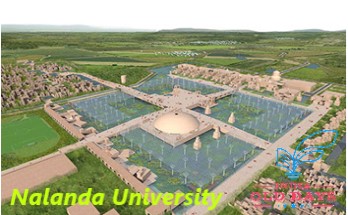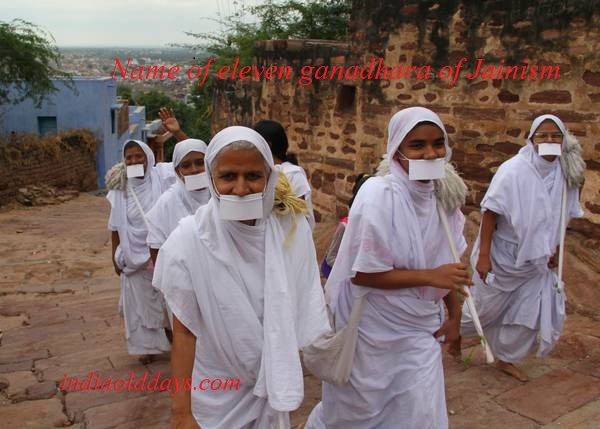History of Gurjar-Prtihar
Gurjar- Prtihar was the main dynasty of north India. Different scholars have given different opinions about the origin of this dynasty, which are as follows-
Origin of Gurjara-Pratihars
Pratihars were a branch of the famous Gurjars. Gurjars were one of those Central Asian tribes, who came with the Huns after the fall of the Gupta Empire. According to Rashtrakuta records, Pratihars were associated with Gurjars. Arab writers such as Abu Zaid and al-Masoodi have mentioned their struggle with the Gurjars of the north. The most important evidence is of the Kannan poet Pampa, who has called Mahipaal Gurjaraj. The name is derived from the king holding the post of Pratihar (high officer) of the Rashtrakuta court.
In whose era was the first attack of the Huns?
Gurjar- Pratihar dynasty

Naagabhatt I
Pratihar first 8th century became popular in the middle of, When their ruler Nagabhatta I defended Western India from the invasion of Arabs and established his dominion till Bhonch. He entrusted a powerful kingdom to his successors, including Malwa and parts of Rajasthan. Nagabhatta I was succeeded by his brother’s sons Kakushta and Devaraj, and both were not important.
Vatsaraaj

Vatsaraj was a powerful ruler and established an empire in North India. He defeated the famous Bhandi dynasty, Whose capital was probably Kannauj. He also defeated Dharmapaal, the ruler of Bengal and laid the foundation of a great empire. He also defeated Dharmapaal, the ruler of Bengal and laid the foundation of a great empire.
Nagabhatta II
Vatsaraj was succeeded by his son Nagabhatta II, Who tried to reclaim the lost reputation of his family. But he proved unfortunate as his ancestor and had to be defeated by the Rashtrakuta ruler Govind III. Nagabhatta II tried his luck in other directions. He attacked Kannauj and removed Dharmapaal’s nominated ruler Chakrayudha and made Kannauj the capital of Pratihar kingdom.
To avenge the defeat of his subordinate ruler, Dharmapaal started preparations and the struggle became inevitable. Pratihar rule defeated Dharmapaal and took control of Munger. According to the Gwalior inscription of his grandson, Nagabhatta II assigned the Vatsas in Anarta (northern Kathiawad), Malwa or Central India, Matsya or East Rajputana, Kirat (region of the Himalayas), Turushka (Arab inhabitants of western India) and Kaushambi (Kosam) region. Defeated. Under Nagabhatta II, there were parts of Rajputana, a large part of modern Uttar Pradesh, central India, northern Kathiawad and adjoining areas within the boundary of Pratihar empire. Nagabhatta II was succeeded by his son Rambhadra, In the short reign of three years, due to aggressive policies of the Pal ruler Devpaal, the power of Pratihars was eclipsed.
Mihir Bhoj

With the ascent of Mihirbhoj, the son of Rambhadra, the power of Pratihars became glorious. He re-established the dominion of his dynasty in Bundelkhand and suppressed the Pratihars (Parihars) of Jodhpur. The Daulatpur Tamrapatra inscription of Bhoj suggests that the Pratihara ruler was successful in establishing his supremacy in Central and Eastern Rajputana. His dominion in the north was established up to the Himalayan hills, As shown by a land grant given to a Kalchuri king in Gorakhpur district.
But Bhoj’s imperialist goal was not successful everywhere. He was defeated by the Paal ruler Devpaal. Not being disappointed by this defeat of the East, he concentrated his attention towards the south and took possession of the areas including South Rajputana and the surrounding areas of Ujjain to the Narmada. Now he was confronted by the Rashtrakutas, whose ruler Dhruv II halted his conquests.
The political landscape changed after the death of the powerful Paal ruler Devpaal and the Rashtrakutas invaded Bengal. Bhoj defeated the weak Narayan Paal and captured a large part of his western territories. Inspired by this victory, Bhoj also attacked Rashtrakuta ruler Krishna III and defeated Krishna III on the banks of the Narmada and took possession of Malwa.
Thus the vast kingdom of Bhoja extended to the north-west Sutlej, the Himalayan hills to the north, Bengal to the east, Bundelkhand and Vatsa regions to the south and southeast, the Narmada and Saurashtra to the southwest and parts of Rajputana to the west. The reign of Bhoj was for a long period of 46 years. Arab traveler Suleiman has mentioned his achievements.
Mahendrapaal I
Bhoj was succeeded by his son Mahenderpaal I. His most important achievement was the conquest of Magadh and North Bengal. Mahendrapaal was a generous patron of the first scholars. The most talented person in his court was Rajasekhar, Whose compositions are – Karporamanjari, Baal Ramayana, Baal Bharat, Poetry Epics.
Mahipaal
After the death of Mahendrapaal, the struggle for the right to the throne broke out. His first son Bhoj II took over the throne. Once again the rashtrakuta under Indra III attacked the Pratihar and destroyed the city of kannauj. but after Indra III returned to the dakkan, Mahipaal got a chance to improve his position. The Arab traveler al-masudi, who came to India in 915-16 AD, mentioned the power and resources of the king of kannauj. Whose kingdom was as far Sindh in the west and Rashtrakuta border in the south. The Arab traveler has confirmed the straggle of the Rashtrakutas and pratiharas and mentioned the important army of Pratiharas.
Parvarti Ruler
Mahipaal’s son and successor was Mahendrapaal II during which time the empire remained unbroken. After the Chandelas became independent, the empire began to crumble under the ruler devpaal. The process of disintegration started in the reign of Devpaal increased during the reign of Vijayapaal. 10th century by the time the Governor of Vijaypaal Succeeded the Governor the power of the pratihar empire had been exhausted. Yashpaal mentioned in an inscription dated 1036 AD was possibly the last ruler of this dynasty.
Reference : https://www.indiaolddays.com




